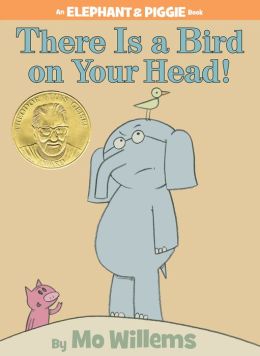BABYMOUSE #6: CAMP BABYMOUSE
 |
| PHOTO RETRIEVED FROM AMAZON.COM |
BIBLIOGRAPHY
Holm, Jennifer L. & Matthew Holm. BABYMOUSE #6: CAMP BABYMOUSE. New York, NY: Random House, 2007. ISBN 9780329655679
CONNECTIONS
PLOT SUMMARY
With an incredible imagination, Babymouse captures our hearts through her mishaps, fails, and victories. On her way to camp, Babymouse imagines she is a wilderness scout, guiding a troop through the wild terrain of the woods. In reality, she is one her way to "Camp Wild Whiskers," an all girls camp. As she stumbles through her way, she joins the Buttercups troop, and together, they find friendship through their losing streak at camp games.
Will she find her place? Can she measure up to the hero she is in her imagination? Will she make it to the end of her two weeks at Camp Wild Whiskers? This graphic novel is a fun read and the colors in the illustrations and size of the book make for a great adventure for young girls.
CRITICAL ANALYSIS
As Babymouse struggles to fit in with the troop and find her way at camp, the reader easily identifies with the animal character. Through her silly imagination and fails, a young reader connects to the typical struggles of trying to fit in with a new crowd. This fun graphic novel helps the reader understand that this process does not happen instantly and that friendships and bonds are formed through experiences involving both loss and victory.
The playful characters presented in this graphic novel add to the light-hearted spirit of the BABYMOUSE series. Skunks, pigs, dogs and squirrels characters are personified and interact with each other comically in the camp setting. The dialogue was somewhat awkward at first, but through a few pages became much easier. The illustrations are simple and to the point, and enhance the comical content. Adults may find this book surprisingly enjoyable, as the trials of Babymouse contain global experiences. Because of the colors, pinks and grays, boys may shy away from this series as it tends to look like a "girls" book. However, the humorous nature of the book may overcome any gender barriers.
As Babymouse struggles to fit in with the troop and find her way at camp, the reader easily identifies with the animal character. Through her silly imagination and fails, a young reader connects to the typical struggles of trying to fit in with a new crowd. This fun graphic novel helps the reader understand that this process does not happen instantly and that friendships and bonds are formed through experiences involving both loss and victory.
The playful characters presented in this graphic novel add to the light-hearted spirit of the BABYMOUSE series. Skunks, pigs, dogs and squirrels characters are personified and interact with each other comically in the camp setting. The dialogue was somewhat awkward at first, but through a few pages became much easier. The illustrations are simple and to the point, and enhance the comical content. Adults may find this book surprisingly enjoyable, as the trials of Babymouse contain global experiences. Because of the colors, pinks and grays, boys may shy away from this series as it tends to look like a "girls" book. However, the humorous nature of the book may overcome any gender barriers.
REVIEW EXCERPTS (FOR SERIES)
WINNER 2006 - Gryphon Award
WINNER 2006 - ALA Notable Children's Book
WINNER 2006 - New York Book Show Awards
WINNER 2006 - Gryphon Award
WINNER 2006 - ALA Notable Children's Book
WINNER 2006 - New York Book Show Awards
From CHICAGO SUN-TIMES- "Move over, Superman. Here comes Babymouse!"
From THE BULLETIN- "A new hero emerges in...Babymouse."
From THE HORN BOOK MAGAZINE- "Sassy, smart...Babymouse is here to stay."
From KIRKUS REVIEWS- "emergent readers will cheer 'Babymouse!'"
From BOOKLIST - "Babymouse is convinced she'll have a great time at summer camp, never mind that she doesn't like the great outdoors. Despite her daydreams of derring-do, she succeeds only in getting into trouble, racking up an impressive number of demerits for her team, the Buttercups. What is she to do? This charming series entry, illustrated as in the familiar black, white, and pink, continues to put Babymouse into situations that most children will immediately recognize. The book's small, square size will fit perfectly into young hands, and the story promises great fun for both new comics readers and avid ones."CONNECTIONS
- Teachers can visit http://www.jenniferholm.com/p/educators.html to find more information about the authors and the series.
- Create a book club for the BABYMOUSE series. Create posters for the theme for each book.
- Use the sequential nature of the book to reinforce sequence of events.
- Compare and contrast a graphic novel to a traditional book. Discuss the different kind of reading required for both.
Other series books from Holms:
- SQUISH (series)
- STUFF (series)
THE FAULT IN OUR STARS
 |
| PHOTO RETREIVED FROM GOODREADS.COM |
Green, John. THE FAULT IN OUR STARS. New York, NY: Penguin, 2012. ISBN 9780148424179
PLOT SUMMARY
With little regard for a gentle or slow beginning, Green introduces the reader to Hazel Grace. An adolecsent girl living with lung cancer, Hazel attends cancer support sessions and meets Augustus. He is a young man afflicted with osteosarcoma, and hence, has lost his leg. In an instant, the two teeneagers connect and begin their journey of teenage love. Through trading of favorite books, they find adventure in discovering the unearthed ending of Hazel's favorite (and fictional) book, AN IMPERIAL AFFLICTION."
Using his "last wish" request, Augustus surprises Hazel with tickets to Amsterdam, where they will have the opportunity to meet the author of the book. It is there where they believe they will have their unanswered questions about the book revealed, and it is there that they discover that the author has no interest in answering their questions. Consequently, Hazel and Augustus become intimately involved while on the trip, and solidify their love for each other.
As one might expect, the cancer aggressively overcomes Augustus, and Hazel learns the beautiful tragedy of falling in love coupled with a short life. The author from Amsterdam reappears and unexpectedly fills Hazel with a sense of hope and the reader with a sense of literary fulfillment.
With little regard for a gentle or slow beginning, Green introduces the reader to Hazel Grace. An adolecsent girl living with lung cancer, Hazel attends cancer support sessions and meets Augustus. He is a young man afflicted with osteosarcoma, and hence, has lost his leg. In an instant, the two teeneagers connect and begin their journey of teenage love. Through trading of favorite books, they find adventure in discovering the unearthed ending of Hazel's favorite (and fictional) book, AN IMPERIAL AFFLICTION."
Using his "last wish" request, Augustus surprises Hazel with tickets to Amsterdam, where they will have the opportunity to meet the author of the book. It is there where they believe they will have their unanswered questions about the book revealed, and it is there that they discover that the author has no interest in answering their questions. Consequently, Hazel and Augustus become intimately involved while on the trip, and solidify their love for each other.
As one might expect, the cancer aggressively overcomes Augustus, and Hazel learns the beautiful tragedy of falling in love coupled with a short life. The author from Amsterdam reappears and unexpectedly fills Hazel with a sense of hope and the reader with a sense of literary fulfillment.
CRITICAL ANALYSIS
A true young adult novel, this book captures the genuine interactions between modern day teenagers, parents, and illness. The fictional story of a young lady living with cancer is told from the perspective of Hazel Grace, the main character. This feature allows the reader to truly feel connected to Hazel, and to intimately develop with the character while reading. The dialogue and text remain true to adolescent language, actions, and emotions. The detail of Hazel's oxygen tank becomes a natural prop within the story, and reminds the reader constantly of Hazel's cancer prognosis. Book lovers may especially be drawn to this novel, as Hazel can herself be seen as one.
Hazel and Augustus develop an immediate relationship, a love at first sight situation. In the midst of a terminal illness, their love never encounters the obstacles typical of most teenage relationships, such as jealousy, other friendships, and parental disapproval. Green does however, maintain the theme of the risk of falling in love, and not avoiding love because of an unknown future. An underlying theme was the friendship Augustus maintains with his best friend, Isaac. As true in new young love, while most abandon their friends, Augustus maintains a sense of self by continuing to develop his friendship with Isaac. THE FAULT IN OUR STARS will touch the reader's heart many times, and will require a full box of tissue.
REVIEW EXCERPTS
From BOOKLIST - "At 16, Hazel Grace Lancaster, a three-year stage IV–cancer survivor, is clinically depressed. To help her deal with this, her doctor sends her to a weekly support group where she meets Augustus Waters, a fellow cancer survivor, and the two fall in love. Both kids are preternaturally intelligent, and Hazel is fascinated with a novel about cancer called An Imperial Affliction. Most particularly, she longs to know what happened to its characters after an ambiguous ending. To find out, the enterprising Augustus makes it possible for them to travel to Amsterdam, where Imperial’s author, an expatriate American, lives. What happens when they meet him must be left to readers to discover. Suffice it to say, it is significant. Writing about kids with cancer is an invitation to sentimentality and pathos—or worse, in unskilled hands, bathos. Happily, Green is able to transcend such pitfalls in his best and most ambitious novel to date. Beautifully conceived and executed, this story artfully examines the largest possible considerations—life, love, and death—with sensitivity, intelligence, honesty, and integrity. In the process, Green shows his readers what it is like to live with cancer, sometimes no more than a breath or a heartbeat away from death. But it is life that Green spiritedly celebrates here, even while acknowledging its pain. In its every aspect, this novel is a triumph. HIGH-DEMAND BACKSTORY: Green’s promotional genius is a force of nature. After announcing he would sign all 150,000 copies of this title’s first print run, it shot to the top of Amazon and Barnes & Noble’s best-seller lists six months before publication."
- 2012 NEW YORK TIMES Bestseller
- TIME magazine’s #1 Fiction Book of 2012
- WALLSTREET JOURNAL Bestseller
- USA TODAY Bestseller
- International Bestseller
- Indie Bestseller
From BOOKLIST - "At 16, Hazel Grace Lancaster, a three-year stage IV–cancer survivor, is clinically depressed. To help her deal with this, her doctor sends her to a weekly support group where she meets Augustus Waters, a fellow cancer survivor, and the two fall in love. Both kids are preternaturally intelligent, and Hazel is fascinated with a novel about cancer called An Imperial Affliction. Most particularly, she longs to know what happened to its characters after an ambiguous ending. To find out, the enterprising Augustus makes it possible for them to travel to Amsterdam, where Imperial’s author, an expatriate American, lives. What happens when they meet him must be left to readers to discover. Suffice it to say, it is significant. Writing about kids with cancer is an invitation to sentimentality and pathos—or worse, in unskilled hands, bathos. Happily, Green is able to transcend such pitfalls in his best and most ambitious novel to date. Beautifully conceived and executed, this story artfully examines the largest possible considerations—life, love, and death—with sensitivity, intelligence, honesty, and integrity. In the process, Green shows his readers what it is like to live with cancer, sometimes no more than a breath or a heartbeat away from death. But it is life that Green spiritedly celebrates here, even while acknowledging its pain. In its every aspect, this novel is a triumph. HIGH-DEMAND BACKSTORY: Green’s promotional genius is a force of nature. After announcing he would sign all 150,000 copies of this title’s first print run, it shot to the top of Amazon and Barnes & Noble’s best-seller lists six months before publication."
THE WASHINGTON POST- “John Green deftly mixes the profound and the quotidian in this tough, touching valentine to the human spirit.”
NEW YORK TIMES Book Review- “[Green] shows us true love—two teenagers helping and accepting each other through the most humiliating physical and emotional ordeals—and it is far more romantic than any sunset on the beach.”
CONNECTIONS
- Follow and visit John Green online at johngreenbooks.com
- Students can discuss teenage love, sex, and drinking as it pertains to this novel. Is it acceptable because they will not have the opportunity later to experience these things? Do you think most parents would respond this way?
- Maintain a journal of emotions, feelings, and similar relationships while reading.
- LOOKING FOR ALASKA ISBN 9780142402511
- AN ABUNDANCE OF KATHERINES ISBN 9780142410707
- PAPER TOWNS ISBN 9780142414934
- WILL GRAYSON ISBN 9780142418475
FLORA AND ULYSSES
 |
| PHOTO RETRIEVED FROM http://www.katedicamillo.com/books/flora.html |
BIBLIOGRAPHY
DiCamillo, Kate. FLORA AND ULYSSES: THE ILLUMINATED ADVENTURES (Kindle Audio Version). Narrated by Tara Sands. Retrieved from AmazonKindle.com. Ill. by K.G. Campbell. Somerville, MA: Candlewick Press, 2013. ISBN 9780763660406
DiCamillo, Kate. FLORA AND ULYSSES: THE ILLUMINATED ADVENTURES (Kindle Audio Version). Narrated by Tara Sands. Retrieved from AmazonKindle.com. Ill. by K.G. Campbell. Somerville, MA: Candlewick Press, 2013. ISBN 9780763660406
PLOT ANALYSIS
"HOLY BAGUMBA!"
A blend of a graphic novel and a traditional novel, Flora Belle is introduced as a cynical, comic loving, hope-avoiding young girl, who witnesses a squirrel being vacuumed up in her neighbor's yard. Amazingly, she discovers the squirrel has been transformed and now has the amazing super power of understanding humans and the ability to type. Along with the discovery of the new super powers and abilities of Ulysses, the squirrel, the complex relationship with her mother makes for an interesting twist. As Flora and her neighbor's great-nephew, William Spiver try save the poetry writing Ulysses, the discovery of the true arch-nemesis creates yet another exciting twist. Through an an adventurous story, Flora embarks on the journey to save Ulysses. Flora Belle, unknowingly, is being saved by Ulysses and his literary devices. Heartwarmingly, Flora discovers love though super-heroes, friends, and family.
"HOLY BAGUMBA!"
A blend of a graphic novel and a traditional novel, Flora Belle is introduced as a cynical, comic loving, hope-avoiding young girl, who witnesses a squirrel being vacuumed up in her neighbor's yard. Amazingly, she discovers the squirrel has been transformed and now has the amazing super power of understanding humans and the ability to type. Along with the discovery of the new super powers and abilities of Ulysses, the squirrel, the complex relationship with her mother makes for an interesting twist. As Flora and her neighbor's great-nephew, William Spiver try save the poetry writing Ulysses, the discovery of the true arch-nemesis creates yet another exciting twist. Through an an adventurous story, Flora embarks on the journey to save Ulysses. Flora Belle, unknowingly, is being saved by Ulysses and his literary devices. Heartwarmingly, Flora discovers love though super-heroes, friends, and family.
CRITICAL ANALYSIS
Flora is a misunderstood young lady, as she struggles somewhat to understand the dynamic of her new home situation. After her parent's recent divorce, Flora is left feeling void of family unity and lacks a positive outlook on life and love. Similarly, the reader discovers Flora lacks close relationships with other children, and is a self-proclaimed loner. Her love for comic books and disdain for her mother's romantic novel writing make for early anticipation. Throughout, readers will wonder if the relationship is one that can be mended, or one that will forever remain on uncommon ground. The character of Ulysses, although a squirrel, brings love and friendship into the cynical young life of Flora Belle.
The book is accompanied by comic pencil drawings of the climactic adventures of Ulysses and Flora. Tara Sand narrates FLORA AND ULYSSES beautifully, and adds tremendous color and texture to the adventure written by DiCamillo. Her vibrant voices for each of the characters helps the reader and listener distinguish between the personalities of the characters. The amusing narration makes for easy listening and ease of enjoyment. As an audio book, I recommend the print version alongside listening to the novel. The comic portion of the audio version can be difficult to follow if not looking at the graphic piece of the reading. The illustrations are an undeniable necessary component of the book. Students will love listening to FLORA AND ULYSSES. In a failed attempt to out-shine Tara Sands for a couple of pages, I was kindly asked by my students to "turn the Kindle back on."
Flora is a misunderstood young lady, as she struggles somewhat to understand the dynamic of her new home situation. After her parent's recent divorce, Flora is left feeling void of family unity and lacks a positive outlook on life and love. Similarly, the reader discovers Flora lacks close relationships with other children, and is a self-proclaimed loner. Her love for comic books and disdain for her mother's romantic novel writing make for early anticipation. Throughout, readers will wonder if the relationship is one that can be mended, or one that will forever remain on uncommon ground. The character of Ulysses, although a squirrel, brings love and friendship into the cynical young life of Flora Belle.
The book is accompanied by comic pencil drawings of the climactic adventures of Ulysses and Flora. Tara Sand narrates FLORA AND ULYSSES beautifully, and adds tremendous color and texture to the adventure written by DiCamillo. Her vibrant voices for each of the characters helps the reader and listener distinguish between the personalities of the characters. The amusing narration makes for easy listening and ease of enjoyment. As an audio book, I recommend the print version alongside listening to the novel. The comic portion of the audio version can be difficult to follow if not looking at the graphic piece of the reading. The illustrations are an undeniable necessary component of the book. Students will love listening to FLORA AND ULYSSES. In a failed attempt to out-shine Tara Sands for a couple of pages, I was kindly asked by my students to "turn the Kindle back on."
REVIEW EXCERPTS
From School Library Journal- "Flora, obsessed with superhero comics, immediately recognizes and gives her wholehearted support to a squirrel that, after a near-fatal brush with a vacuum cleaner, develops the ability to fly and type poetry. The 10-year-old hides her new friend from the certain disapproval of her self-absorbed, romance-writer mother, but it is on the woman's typewriter that Ulysses pours out his creations. Like DiCamillo's The Magician's Elephant (Candlewick, 2009), this touching piece of magical realism unfolds with increasing urgency over a mere few days and brings its somewhat caricatured, old-fashioned characters together into what becomes a supportive community for all. Campbell's rounded and gentle soft-penciled illustrations, at times in the form of panel art furthering the action, wonderfully match and add to the sweetness of this oddball story. Rife with marvelously rich vocabulary reminiscent of the early superhero era (e.g., “Holy unanticipated occurrences!”) and amusing glimpses at the world from the point of view of Ulysses the supersquirrel, this book will appeal to a broad audience of sophisticated readers. There are plenty of action sequences, but the novel primarily dwells in the realm of sensitive, hopeful, and quietly philosophical literature."
From BOOKLIST- "The story begins with a vacuum cleaner. And a squirrel. Or, to be more precise, a squirrel who gets sucked into a Ulysses Super Suction wielded by Flora’s neighbor, Mrs. Tickham. The rather hairless squirrel that is spit out is not the same one that went in. That squirrel had only one thought: “I’m hungry.” After Flora performs CPR, the rescued squirrel, newly named Ulysses, is still hungry, but now he has many thoughts in his head. Foremost is his consideration of Flora’s suggestion that perhaps he is a superhero like The Amazing Incandesto, whose comic-book adventures Flora read with her father. (Drawing on comic-strip elements, Campbell’s illustrations here work wonderfully well.) Since Flora’s father and mother have split up, Flora has become a confirmed and defiant cynic. Yet it is hard to remain a cynic while one’s heart is opening to a squirrel who can type (“Squirtl. I am . . . born anew”), who can fly, and who adores Flora. Newbery winner DiCamillo is a master storyteller, and not just because she creates characters who dance off the pages and plots, whether epic or small, that never fail to engage and delight readers. Her biggest strength is exposing the truths that open and heal the human heart. She believes in possibilities and forgiveness and teaches her audience that the salt of life can be cut with the right measure of love."
CONNECTIONS
From BOOKLIST- "The story begins with a vacuum cleaner. And a squirrel. Or, to be more precise, a squirrel who gets sucked into a Ulysses Super Suction wielded by Flora’s neighbor, Mrs. Tickham. The rather hairless squirrel that is spit out is not the same one that went in. That squirrel had only one thought: “I’m hungry.” After Flora performs CPR, the rescued squirrel, newly named Ulysses, is still hungry, but now he has many thoughts in his head. Foremost is his consideration of Flora’s suggestion that perhaps he is a superhero like The Amazing Incandesto, whose comic-book adventures Flora read with her father. (Drawing on comic-strip elements, Campbell’s illustrations here work wonderfully well.) Since Flora’s father and mother have split up, Flora has become a confirmed and defiant cynic. Yet it is hard to remain a cynic while one’s heart is opening to a squirrel who can type (“Squirtl. I am . . . born anew”), who can fly, and who adores Flora. Newbery winner DiCamillo is a master storyteller, and not just because she creates characters who dance off the pages and plots, whether epic or small, that never fail to engage and delight readers. Her biggest strength is exposing the truths that open and heal the human heart. She believes in possibilities and forgiveness and teaches her audience that the salt of life can be cut with the right measure of love."
CONNECTIONS
- Prior to reading this booK, have students read early comic books that use traditional comic verbiage, such as "Holy Bagumba." This will facilitate the reading and avoid confusion with the comic language used.
- Students will create an acrostic poem for the characters Flora and Ulysses. The acrostic poem should include the characteristics that make the characters unique.
- Students will summarize chapters and create a flow map. Once the book is complete, students will complete a book analysis using their summaries and flow maps.
- Assign different quotes from the book and have students analyze how they help the reader make inferences. Students will discuss the quotes and present their interpretation of the quote to the class.
- Create a vocabulary list from the book and have students create word maps and acrostic poems (superhero, arch-nemesis, etc.)
Other books from Kate Dicamillo:
- BECAUSE OF WINN DIXIE ISBN 9780763644321
- THE TALE OF Despereaux ISBN 9780763625290
- THE MAGICIAN'S ELEPHANT ISBN 9780763652982
- THE TIGER RISING ISBN 9780763618988

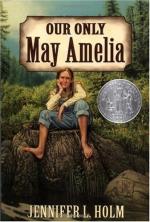



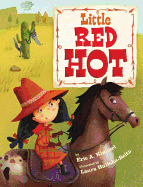
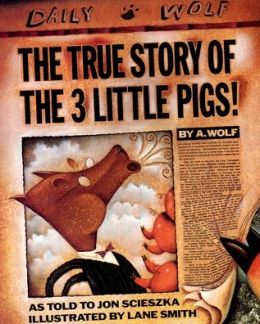


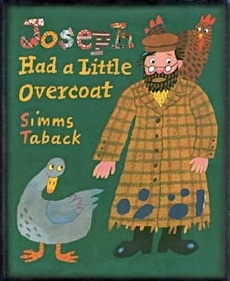
_cover.jpg/300px-Where_The_Wild_Things_Are_(book)_cover.jpg)



